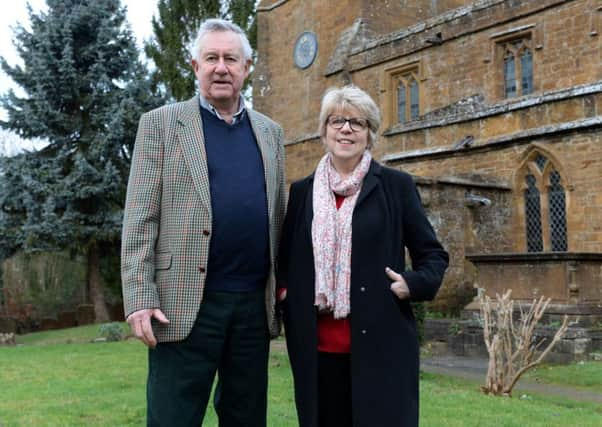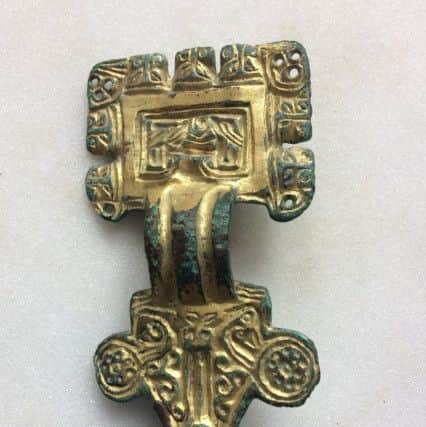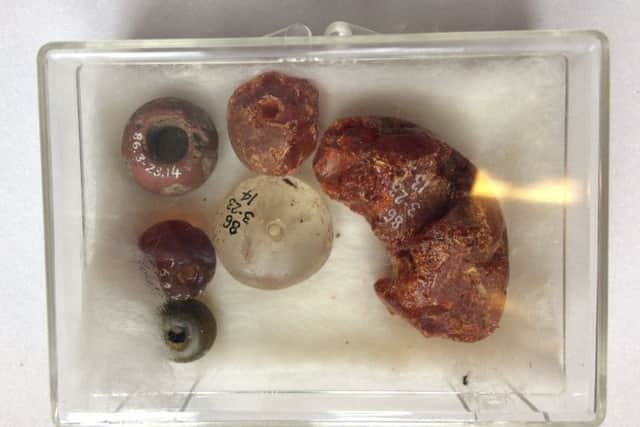Hornton ‘Hoard’ to be displayed for the first time


The items – ornaments that would have adorned clothes – have been languishing, unseen, in a drawer in the British Museum for well over a century.
Now, after strong encouragement from Banbury Museum and the Hornton History Group, the ‘hoard’ will be brought back for at least five years for display in the newly refurbished museum gallery.


Advertisement
Hide AdAdvertisement
Hide Ad“We have just heard from British Museum who say they are now prepared to loan the ‘Hornton Hoard’ to Banbury Museum for an initial period of five years,” said Bob Langton, chairman of the museum trust.
“It will be delivered to us for a special display at some point later this year. This follows several requests by Banbury Museum director Simon Townsend and my letter to the director of the British Museum who initially rejected our request.”
The discovery of the artefacts was due to the diligence of the late Barbara Greenhalgh of Hornton, who conducted extensive research into the hoard.
It dates from 500 to 550AD and was retrieved from the ‘tunnel’ grave of a high-status Anglo Saxon woman.


Advertisement
Hide AdAdvertisement
Hide AdIt includes a large gilded bronze square-headed brooch, which would have been pinned to a cloak.
The other items are two identically decorated, round brooches for fixing to the shoulders of a tunic and a number of amber and glass beads which would have been strung between the brooches.
Hornton History Group’s Laurie Stewart-Furneaux said: “It appears the woman was buried in the cape and tunic. It is beautiful Germanic jewellery and is not really a ‘hoard’ but grave goods.
“Hornton was an Anglo-Saxon village and it’s interesting this is one grave on its own. It is a tunnel grave because it was dug into the side of a slope rather than downwards.
Advertisement
Hide AdAdvertisement
Hide Ad“The site of the grave is on the Glebe lands – about an acre of land that was owned by the church and is an extension of today’s graveyard. That land is now in private ownership.
“The ‘hoard’ was discovered by the vicar of Hornton Parish Church, Rev Charles Heaven, in the late 19th century. It is thought the site was being cleared to build a house though that building has since been demolished,” she said.
Rev Heaven sold the artefacts to a French dealer who sold them on to the British Museum, said Mrs Stewart-Furneaux.
At that time Hornton Church’s condition was considered a public scandal as there had been no repairs since the 15th century .
Advertisement
Hide AdAdvertisement
Hide AdRev Heaven may have been under considerable pressure to rectify matters. Records show he had made attempts to raise £5,000 for this purpose.
Mrs Stewart-Furneaux and Mr Townsend went to London last summer to see the jewellery at the British Museum.
“They’ve been stuck in a drawer all this time but Banbury Museum has everything necessary to take them back to exhibit in terms of conservation, security and display.”
She said the exhibition in the museum’s newly refurbished gallery will be a fitting legacy to Mrs Greenhalgh, who died just before Christmas, and a tribute to her dedication in getting the ‘hoard’ returned.
A British Museum spokesman said: “Our loans team are in touch with Banbury Museum directly to progress a request to loan the hoard in 2019.”